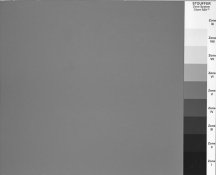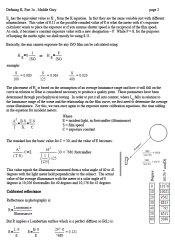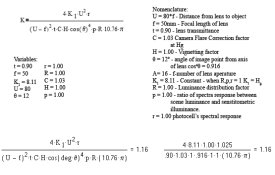Here's a quick tip on saving film when shooting 35mm rolls for testing.
Cut several little pieces of blue painter's tape, maybe 1/8" x 1/2". Fold over about 1/3 along the strip and stick adhesive-to-adhesive so you have a sticky part and a "tab" to lift them.
Load your camera, set up a still life with repeatable light and a good range of shadow to highlight detail (I use styrofoam packing blocks for highlight detail), throw in a gray card or chart. Shoot 4 or 5 brackets and then advance the film to a blank frame. In the darkroom or a changing bag, open the camera back and stick a "tab" of tape on the blank frame (roughly center it on the back of the film aligned with the lens opening, doesn't need to be exact). Close the back and advance 1 frame.
Shoot the same set of brackets, and repeat. On a 24 roll, if you shoot a 4-stop bracket, you'll end up with 5 identical brackets, each separated by a blank frame, which is marked with a tab of tape.
Now, in the changing bag or darkroom, open the back, pull out the cartridge, and cut it away or canopener it and discard. Unspool the film from the takeup reel, and feel for the tape tabs as you pull the film off. Cut the film with scissors at each tab and discard the tape (in a bag, just stick 'em to the empty cartridge to be neat). You'll have 5 strips of film. Place 4 of these in an old 4x5 box or light-tight container, like a spare film tank. Thread one strip onto a reel (4 frames will hold just fine in a reel).
Process this strip, observe it, even print some 5x7's or 8x10's with a #2 or 2.5 filter. Process a 2nd strip, altering your time, dilution, whatever based on observing the first strip. Take notes and include the frame number range in your notes. In an afternoon, you can try 5 different processing scenarios on 1 24 frame roll of 35 with just one or two small batches of dev and 1 batch of fix. Just keep your dev. temp consistent unless you want to experiment with dev temp effects.
You can re-use even one-shot developers a couple times since the dev won't be exhausted by 4 frames.
This won't give you the range of images from shooting an entire roll, but I think it's a great start at figuring out how to get negs with the density range you desire for your style.
Kinda wondering if this would work with 120 film - I don't know if on, say, an RB67 you would screw things up by opening the back mid roll - would the back "think" you need to wind a bunch of paper to get to frame 1? Or maybe just remove the revolving adapter and stick tape on the emulsion side, at the edge, and not use the blank frame method, giving you 3 strips of 3 brackets? Hmm...







 .
. 